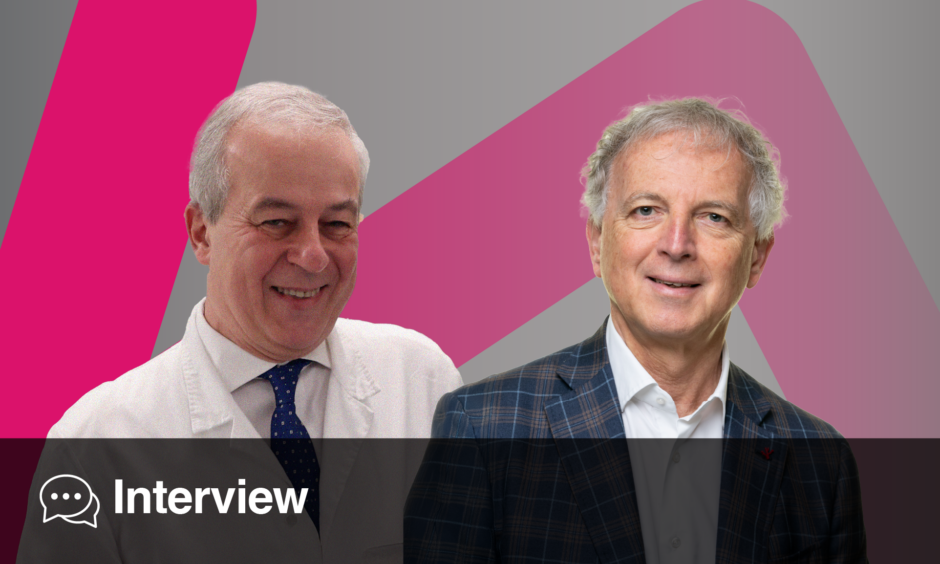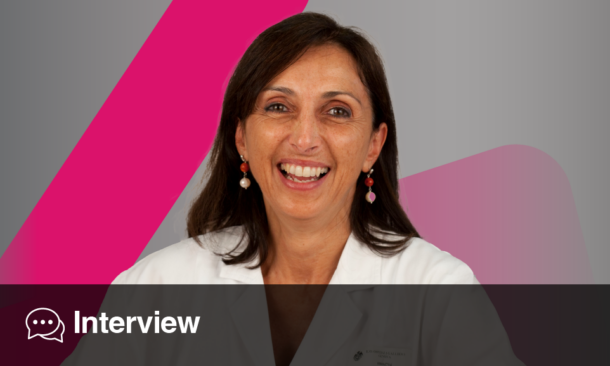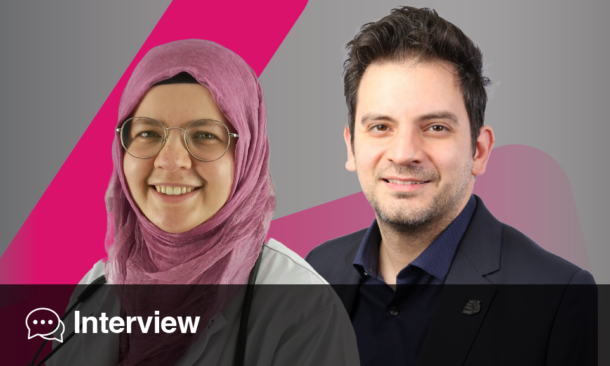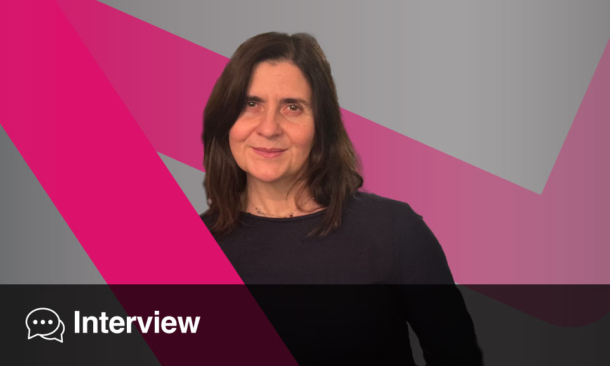Author: Ada Enesco, EMJ, London, UK
Citation: EMJ Hematol. 2024;12[Suppl 1]:11-14. DOI/10.33590/emjhematol/11000032. https://doi.org/10.33590/emjhematol/11000032.
![]()
TOWARDS A HAEMOPHILIA-FREE MIND
Cedric Hermans, Cliniques Universitaires Saint-Luc, Brussels, Belgium, opened the session by highlighting the profound impact of haemophilia on the emotional wellbeing of patients, and the strong link between physical and mental health. In the past decade, a dramatic evolution in haemophilia care has occurred, with the introduction and increased availability of replacement and non-replacement therapies. This has led to a paradigm shift in treatment aims, from patient survival and prevention of life-threatening bleeding to improvement to quality of life. “We live in a new haemophilia care environment,” explained Hermans, “with new treatment modalities, new treatment ambitions, and new treatment outcomes.”
With standard half-life prophylaxis, haemophilia severity can be reduced by one degree, but the aim of newer therapies is to enable more dramatic changes in phenotype. New ambitions for treatment should aim for ‘mental liberation’ of patients, where patients can be freed from the daily fears and constraints of haemophilia, and the burden of repeated, poorly tolerated treatments. Hermans asked his patients: “Do you currently experience days when your mind is not preoccupied by haemophilia?” The answer given often depended on treatment modality. While prophylaxis with short-acting factor concentrates offered little mental liberation, non-factor replacement therapies allowed patients some degree of liberation. However, the newest treatment approach, gene therapy, holds the greatest promise for bringing patients one step closer to a haemophilia-free mind.
However, Hermans emphasised that complete ‘mental liberation’ is still impossible. Gene therapy and non-replacement therapy do not cure haemophilic arthropathy, and long-term effects of new treatments are still uncertain. Furthermore, the hereditary nature of haemophilia remains unchanged, affecting family planning. Current therapies cannot prevent “the possible irreversible, social, family, professional, and educational frustration or deprivations attributable to haemophilia,” explained Hermans, “as well as the burden of transmitting genetically a disease with serious consequences.” He emphasised that multidisciplinary care is crucial in treating haemophilia, to better understand and tackle the complex ‘ecosystem’ of each patient.
Furthermore, Hermans concluded that only 15% of people with haemophilia worldwide have access to effective treatment, “an unacceptably low number,” making health equity a priority in haemophilia care.
LONG-TERM MONITORING OF JOINT HEALTH
Roberta Gualtierotti, Università degli Studi di Milano, Italy, drew the audience’s attention to the long-term challenge of arthropathy in haemophilia. Even a single joint bleed can lead to irreversible joint damage, and repeated joint bleeding results in chronic pain, reduced mobility, and decreased quality of life. New tools for earlier detection of joint bleeding and long-term monitoring of joint health are needed.
Musculoskeletal ultrasound is a non-invasive and easily accessible tool to assess joint health; however, it requires a physical visit to a care centre, and the number of ultrasound experts is limited. Gualtierotti explained that artificial intelligence (AI) and telemedicine can serve as powerful tools to aid patients with the acquisition of ultrasound images at home, and support practitioners in the follow-up process. Gualtierotti shared the new telemedicine system proposed by her team, which integrates AI and musculoskeletal ultrasound to follow patients from their home. Images obtained by patients are sent to medical practitioners for remote evaluation of joint bleeding risk, and patient advice can be given almost immediately. To ensure a quick and reliable process, Gualtierotti and team proposed the CADET, a computer-aided diagnosis tool that contains a set of AI tools to support the process of remote joint bleeding identification. “Through an evidence-based approach, telemedicine and AI need to be validated to assist patients, caregivers, and physicians,” stated Gualtierotti.
Gualtierotti also highlighted the current lack of consensus on ultrasound definitions of haemophilic arthropathy, and of validated biomarkers. Research from her group on the histopathological and transcriptomics landscape of synovitis in arthropathy is currently ongoing. She insisted that novel biomarker discovery, along with standardisation of current parameters for joint damage and bleeding, will be required to guide patient treatment and management.
Finally, Gualtierotti stressed the need for new tools that monitor the physical activity of patients with haemophilia. Few mobile applications actually allow practitioners to use patient data for personalised treatment. The TEMPO project, funded by the Italian Ministry of University and Research, is integrating patients’ diaries with activity collected by joint ultrasound images, to understand bleeding risks during physical activity. Furthermore, to increase adherence to rehabilitation plans, Gualtierotti’s group has developed the Play4Physio mobile app, which allows players to control games with their body movements, recognised through the mobile device camera.
SECOND-GENERATION HAEMOPHILIA GENE THERAPY
In the final presentation, Denise Sabatino, University of Pennsylvania, Children’s Hospital of Philadelphia, USA, explained how new gene therapies are revolutionising haemophilia care. The first adeno-associated virus (AAV) gene therapy products have now been approved for haemophilia A and B, with patients achieving therapeutic levels of factor VIII (FVIII) and factor IX (FIX), respectively.
Sabatino pointed out that the current issue with gene therapy is durability: “How long will FVIII or FIX expression last after treatment?” In recent studies, long-term follow-up in patients receiving AAV gene therapy for haemophilia B showed sustained levels of FIX expression for approximately 10 years, but patients treated with AAV gene therapy for haemophilia A showed a fast decline in FVIII levels.1 Furthermore, the lack of predictability of individual patient responses, and uncertain long-term safety outcomes, remain key obstacles for patients treated with AAV gene therapy.
Sabatino stated that second-generation gene therapy approaches may provide opportunities to overcome these challenges, for instance by using variant FVIII or FIX proteins with enhanced function. The FIX Padua variant exhibits eight-fold greater specific activity than wild-type, and has been incorporated as second-generation haemophilia B gene therapy. No patients have developed antibodies to FIX Padua in any AAV studies. However, for haemophilia A, an FVIII variant has not yet been established as a second-generation platform. “FVIII variants with enhanced function may provide novel strategies for improving second-generation approaches for AAV gene therapy,” said Sabatino.
Several FVIII variants are currently in pre-clinical development. For instance, FVIII-V3 comprises a synthetic B domain that facilitates secretion of the protein, and has shown two- to three-fold higher expression than wild-type in mice and primates.2 Sabatino and colleagues also identified variant FVIII Δ3-SP/DE, which expresses two- to five-fold higher than wild-type in primates, overcoming the key issue of low FVIII expression in haemophilia A therapy. Sabatino explained that using FVIII variants offers several benefits, such as overcoming inefficient FVIII secretion, while using lower vector doses, and therefore minimising potential toxicities. However, she noted they also carry the risk of potential immunogenicity against the modified protein, where animal models may not accurately predict immunogenicity in humans.
In addition to new variants, Sabatino explained that alternative gene delivery approaches could enhance haemophilia gene therapy outcomes. One of the key characteristics of AAV is that it remains primarily episomal, with very low integration frequency, which was initially regarded as a benefit. However, Sabatino pointed out that episomes may be diluted out upon cell division, leading to loss of expression. Furthermore, re-administration of AAV is not currently possible, due to the development of anti-AAV antibodies upon vector administration. She introduced alternative gene delivery approaches, where the transgene is integrated into the target cell genome, using lentiviral vectors, transposons, or a targeted approach like CRISPR/Cas9. These techniques would lead to persistent expression of the transgene.
Sabatino shared a novel ex vivo approach that uses a lentiviral vector to target haematopoietic stem cells. FVIII is synthesised and stored in the stem cells, which are then reintroduced into patients to be released at the site of vascular injury. This approach is currently being trialled in patients with severe haemophilia A with history of inhibitors, and has shown positive results in the first patient.3
Finally, non-viral delivery approaches, like DNA transposons, which use lipid nanoparticles for delivery, offer the unique potential for redosing, as antiviral antibodies are not an issue. The CRISPR/Cas9 system has also allowed targeted, stable gene insertion of FIX for haemophilia B.4 However, additional studies will be required to evaluate off-target effects.
CONCLUSION
In an era of new treatment milestones for haemophilia, the focus is now placed on improving patient quality of life and mental wellbeing. Second-generation gene therapies, the integration of AI and telemedicine, and a multidisciplinary model are on the horizon for haemophilia care.







